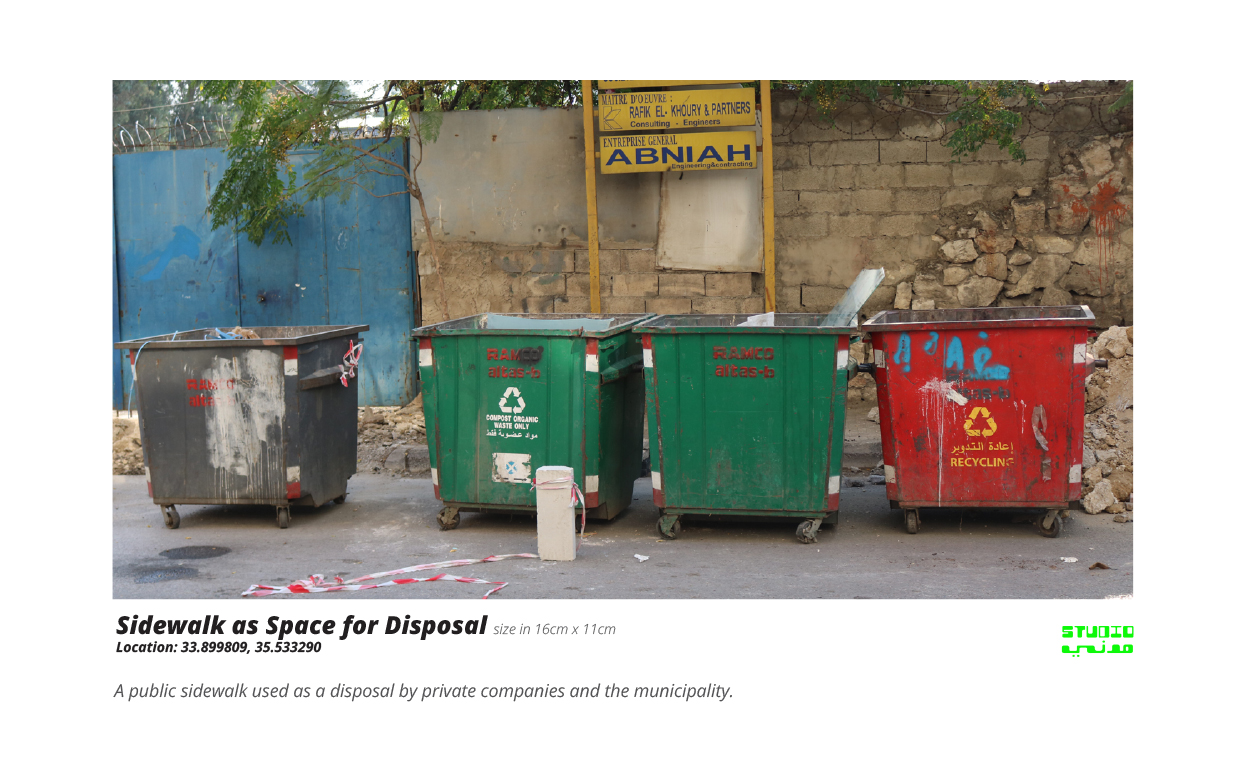Development
The vision of 'Ji[Daruna]' was tested in a pilot for the Karantina - Nahr Beirut - Bourj Hammoud radius. Photographic surveys were used to convey the socio-political realities through the physicalities of the urban environment. How are the residents using barriers and props to define their living? What do these observations say about their status? The authorities, unions of residents, business owners, and other stakeholders are potential collaborators in the lack of order in the cities. The mappers and surveyors from the Artists & Laborers working group went on several ´kazdoura´ [strolls] between the areas and identified a lot of phenomena in the urban landscape. In the first assessment, it was shown that almost 100% of the barriers in the photographs invade public space, and nearly 50% occupy sidewalks. More than half are immovable installations.
In the case of graffiti,
One can understand the public opinion of a country through the writings on its walls. When there is no other reliable source of expression and/or no trusted media, the blank spaces of a city become a way to document [Baranko, 2020]. A recent paper illustrates the example of Egypt and the “Revolutionary Wall on Mohamed Mahmoud Street near Tahrir Square”. It states that it served as an “important archive of contemporary Egyptian culture, politics and revolution” but has since then been destroyed, “the wall scrubbed of the human voices and experiences made visual by Cairo’s artists”. The wall is also described as a “truthful urban narrative of the uprising”, which the government has been trying to erase [Cory, 2022]. As was the case with Egypt, our very own documentation of major events and public opinions on our walls is critical as history taught at school is not one that is conventional by the Lebanese population; however the writings on the wall and the expressions on the surfaces of our environment are undeniable [Fattah].
Potential Prospects
The crowd-sourcing platform could be to gather images into an archive, far from reporting unusual urban phenomena and violations. Relevant reports can be of expressive work and artistic murals made on the walls in neighborhoods. The archive behaves as a preservation of the mural and physical expression that reflects Lebanon’s recent years of revolution, suffering, anger, and reform. After listing the selected areas to visit around Lebanon, the team has conducted photography field trips followed by discussion-and-sorting workshops to classify the documented data: photographs, titles, and self written art statements for the October 17th 2019 revolution.
This very archive is a history that is not only delineated in words and renowned speeches, but also in texture, color, and tone.

